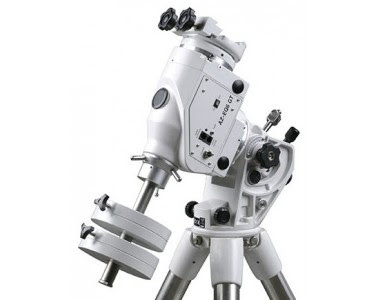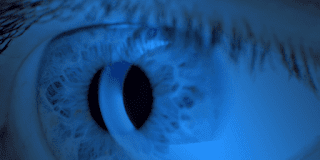Equipo
En AstroPlanetaria, disponemos del equipo necesario para disfrutar tanto de
fantásticas noches de observación como para practicar astrofotografía. La
elección de nuestro principal tubo óptico se basó en que ofreciera una buena
experiencia en observación pero con un rendimiento notable en astrofotografía
planetaria. La configuración óptica que más se adapta a estas especificaciones
pasaba por una relación focal alta (para conseguir aumentos elevados y con ello
mayor resolución) y un diámetro generoso (sin perder portabilidad del equipo).
Estas características encajan con un S/C pues ofrecen focales de f/10 con
calidad óptica y tamaño contenido.
El tubo óptico
que seleccionamos fue el Celestron C11 XLT. Se trata de un Smith Cassegrain con
un espejo primario de Ø280mm y un secundario de Ø95mm con tratamientos
StarBright XLT, para mejorar la transmisión las capas reflectantes. Tiene
reconocida fama por sus resultados en astrofotografía planetaria y además ofrecer
un magnifico rendimiento en visual.
In
AstroPlanetaria, we have the necessary equipment to enjoy both fantastic
observation nights and to practice astrophotography. The choice of our main
optical tube was based on offering a good observation experience but with a
remarkable performance in planetary astrophotography. The optical configuration
that best suits these specifications went through a high focal ratio (to
achieve high increases and with it higher resolution) and a generous diameter
(without losing portability of the equipment). These features fit with an S / C
as they offer f / 10 focal lengths with optical quality and contained size .
The
optical tube that we selected was the Celestron C11 XLT. It is a Smith
Cassegrain with a primary mirror of Ø280mm and a secondary of Ø95mm with
StarBright XLT treatments, to improve the transmission of the reflective
layers. It has recognized fame for its results in planetary astrophotography
and also offer a magnificent performance in visual.
Para poder
manejar el peso de nuestro tubo óptico, recurrimos a una montura de probada
fiabilidad y gran uso entre los astrónomos amateur, La AZEQ6 GT de la firma
Skywatcher y que soporta hasta 25Kg de carga. En nuestro caso, la montura
trabaja casi al límite de la carga máxima recomendada. Permite disponer de
configuración Altazimutal y Ecuatorial al tratarse de una montura híbrida.
In order to handle the weight of our optical tube, we resorted to a frame of proven reliability and great use among amateur astronomers, the AZEQ6 GT from the firm Skywatcher and that supports up to 25Kg of load. In our case, the frame works almost to the limit of the maximum recommended load. It allows having Altazimutal and Equatorial configuration as it is a hybrid mount.
In order to handle the weight of our optical tube, we resorted to a frame of proven reliability and great use among amateur astronomers, the AZEQ6 GT from the firm Skywatcher and that supports up to 25Kg of load. In our case, the frame works almost to the limit of the maximum recommended load. It allows having Altazimutal and Equatorial configuration as it is a hybrid mount.
Por parte del
equipamiento para visual disponemos de varios oculares que cubren los aumentos
útiles para observar tanto objetos de cielo profundo como grandes aumentos para
el sistema solar. Contamos con dos oculares cuya utilidad se reduce a la puesta
en estación, un Plössl de 40mm para los primeros estadios de la alienación
cuando es necesario un gran campo y un Kellner de 12,5mm con retículo iluminado
para un ajuste preciso de las estrellas de calibración.
From the equipment for visual we have several eyepieces that cover the useful increases to observe both objects of deep sky and large increases for the solar system. We have two eyepieces whose use is reduced to the station, a Plössl 40mm for the first stages of the alienation when a large field is required and a 12.5mm Kellner with illuminated reticle for a precise adjustment of the calibration stars .
From the equipment for visual we have several eyepieces that cover the useful increases to observe both objects of deep sky and large increases for the solar system. We have two eyepieces whose use is reduced to the station, a Plössl 40mm for the first stages of the alienation when a large field is required and a 12.5mm Kellner with illuminated reticle for a precise adjustment of the calibration stars .
Por otra parte,
contamos con tres oculares para cubrir todos los objetos celestes. Dos de ellos
son de la firma Baader Planetarium Hyperion, un SWA 68° 21mm que se puede considerar
el de mayor uso para cielo profundo y un SWA 68° 13mm para pequeños objetos de
cielo profundo (nebulosas planetarias, pequeñas galaxias) y para planetaria. El
último ocular es un Explore Scientific de 6,7mm 82° para uso exclusivo en
planetaria y que lleva al C11 a su máximo aumento teórico.
On the other hand, we have three eyepieces to cover all celestial objects. Two of them are from the signature Baader Planetarium Hyperion, a SWA 68 ° 21mm that can be considered the most used for deep sky and a SWA 68 ° 13mm for small objects of deep sky (planetary nebulae, small galaxies) and planetary. The last eyepiece is an Explore Scientific of 6.7mm 82 ° for exclusive use in the planetary and that leads to the C11 at its maximum theoretical increase.
On the other hand, we have three eyepieces to cover all celestial objects. Two of them are from the signature Baader Planetarium Hyperion, a SWA 68 ° 21mm that can be considered the most used for deep sky and a SWA 68 ° 13mm for small objects of deep sky (planetary nebulae, small galaxies) and planetary. The last eyepiece is an Explore Scientific of 6.7mm 82 ° for exclusive use in the planetary and that leads to the C11 at its maximum theoretical increase.
Como
accesorios disponemos de un prisma diagonal de TS 2’’ y dos lentes Barlow (Para
uso principal en astrofotografía planetaria). Las Barlow son una 2,5X GSO acromática
y un Televue 2X acromática pero de gran calidad.
As accessories we have a diagonal prism of TS 2 '' and two Barlow lenses (For main use in planetary astrophotography). The Barlow are a 2.5X achromatic GSO and an Achromatic 2X Televue but of great quality.
As accessories we have a diagonal prism of TS 2 '' and two Barlow lenses (For main use in planetary astrophotography). The Barlow are a 2.5X achromatic GSO and an Achromatic 2X Televue but of great quality.
En lo
referente al equipamiento para astrofotografía planetaria, disponemos de una
serie de filtros para conseguir las composiciones RGB de la marca Baader
Planetarium (Serie de filtros RGB para CCD) y dos filtros de luminancia (Baader
Planetarium L y Astronomik ProPlanet IR742). Contamos con un filtro
especializado en capturar Urano y Neptuno de R+IR paso banda desde los 610nm
(Wratten 25) y otro para la observación de la luna del tipo polarización
variable.
Regarding the equipment for planetary astrophotography, we have a series of filters to achieve the RGB compositions of the Baader Planetarium brand (RGB filter series for CCD) and two luminance filters (Baader Planetarium L and Astronomik ProPlanet IR742). We have a filter specialized in capturing Uranus and Neptune from R + IR band pass from 610nm (Wratten 25) and another for the observation of the moon of the variable polarization type.
Regarding the equipment for planetary astrophotography, we have a series of filters to achieve the RGB compositions of the Baader Planetarium brand (RGB filter series for CCD) and two luminance filters (Baader Planetarium L and Astronomik ProPlanet IR742). We have a filter specialized in capturing Uranus and Neptune from R + IR band pass from 610nm (Wratten 25) and another for the observation of the moon of the variable polarization type.
Para agilizar
las secuencias de filtros durante las sesiones de recogida de datos, hemos modificado
una rueda portafiltros manual de 5 posiciones. La base de la modificación es
Arduino y piezas impresas en 3D. Se controla desde el software FireCapture con
un de EQMOD.
La cámara utilizada sn:
- Basler ACA640-120gm, se trata de una cámara industrial que monta el CCD ICX618 de Sony y que alcanza 125fps. También es compatible con el Software FireCapture.
- ZWO ASI290MM, una cámara excepcional por sus especificaciones muy adaptada alas necesidades de la astrofotografia planetaria.
To streamline the filter sequences during the data collection sessions, we have modified a 5-position manual filter wheel. The basis of the modification is Arduino and 3D printed pieces. It is controlled from the FireCapture software with an EQMOD.
- Basler ACA640-120gm, se trata de una cámara industrial que monta el CCD ICX618 de Sony y que alcanza 125fps. También es compatible con el Software FireCapture.
- ZWO ASI290MM, una cámara excepcional por sus especificaciones muy adaptada alas necesidades de la astrofotografia planetaria.
To streamline the filter sequences during the data collection sessions, we have modified a 5-position manual filter wheel. The basis of the modification is Arduino and 3D printed pieces. It is controlled from the FireCapture software with an EQMOD.
The
camera used in Basler ACA640-120gm, is an industrial camera that mounts the
Sony ICX618 CCD and reaches 125fps. It is also compatible with the FireCapture
Software. The image shows the configuration that we normally use in planetary.
También disponemos desde hace poco de una DSLR Canon eos 4000D, cuya utilidad es capturar objetos de cielo profundo y otros objetos del sistema solar. Tenemos el reto de capturar asteroides, Planetas menores y por supuesto Plutón!! durante la temporada invernal.
We also
recently have a DSLR Canon eos 4000D, whose utility is to capture deep sky
objects and other objects in the solar system. We have the challenge of
capturing asteroids, minor planets and of course Pluto! during the winter
season.
Para observar los objetos más débiles del firmamento contamos con un tubo 100% artesanal. Las ópticas son obra del magnifico constructor de telescopios Joan Lopez Vila (Girona). Nos embarcamos en la construcción de esta joya para aquellas noches oscuras donde los objetos se muestran más en detalle. No dudes en visitar la entrada donde explicamos el proceso de construcción de este equipo.
To observe the
weakest objects in the sky we have a 100% handmade tube. The optics are the
work of the magnificent telescope builder Joan Lopez Vila (Girona). We embarked
on the construction of this jewel for those dark nights where the objects are
shown in more detail. Do not hesitate to visit the entrance where we explain
the construction process of this equipment.




















Comentarios
Publicar un comentario